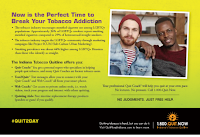On July 1, 2020, Indiana will enact a statewide Tobacco 21 law, becoming the 23rd state to pass a statewide bill.
Governor Holcomb signed SB 1 on March 18, 2020 raising the tobacco sales age to 21, as well as doubling financial penalties on retailers, increasing the violation accrual period to 12 months (note: best practice is 36 months), and requires a 1,000-foot distance between new tobacco/vape shops and schools with existing businesses grandfathered.Ω
Indiana has a higher than the national average rate of high school smoking, and an above average rate of adult smoking as well. An estimated 151,000 children now under the age of 18 will eventually die prematurely due to smoking, with 3,700 children becoming daily smokers each year. The result is an annual health care cost of $2.93 billion that is directly caused by smoking, and another $3.17 billion in lost productivity. The state spends only 12.1% of the CDC recommended amount on tobacco prevention. Read more here






